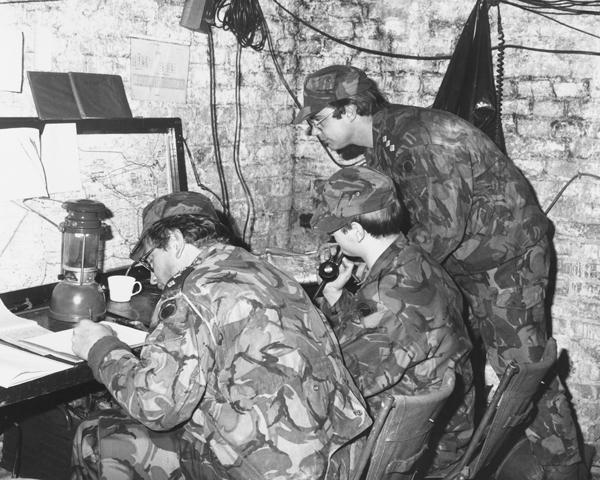Explore more from Regiments and Corps
The Royal Irish Rangers (27th (Inniskilling), 83rd and 87th)
2 minute read
Origins
This regiment was formed in July 1968 by merging The Royal Inniskilling Fusiliers, The Royal Irish Fusiliers (Princess Victoria’s) and The Royal Ulster Rifles.
Initially composed of three battalions, the regiment was reduced to two later that year, when the 3rd Battalion (Royal Irish Fusiliers) was disbanded. It became the county regiment for the six counties of Northern Ireland.
As its predecessor regiments had either been ‘Rifles’ or ‘Fusiliers’, the new designation ‘Rangers’ was adopted to avoid favouring one of these former titles.
Deployments
1st Battalion spent the first two years of its existence in England, while 2nd Battalion was sent to Gibraltar and Bahrain.
Both battalions spent much of the 1970s and 1980s serving with the British Army of the Rhine in West Germany and on garrison duties in England. There were also deployments to the Falkland Islands (1983) and to Cyprus with United Nations peacekeeping forces (1976, 1977 and 1991).
The Rangers also served as fire-fighters in 1977 during the national strike by firemen. Tours of Northern Ireland during 'the Troubles' followed for both battalions in 1988 and 1990.
Legacy
In July 1992, the regiment was amalgamated with The Ulster Defence Regiment to form The Royal Irish Regiment (27th (Inniskilling), 83rd and 87th and the Ulster Defence Regiment).
Regimental museums
The National Army Museum works with a network of Regimental and Corps Museums across the UK to help preserve and share the history and traditions of the Army and its soldiers.
Discover more about the Royal Irish Rangers by visiting the Inniskillings Museum at Enniskillen Castle, the Royal Irish Fusiliers Museum in Armagh and the Royal Ulster Rifles Museum in Belfast.









